International
Trump confronts South African president about widespread killing of White farmers in the country
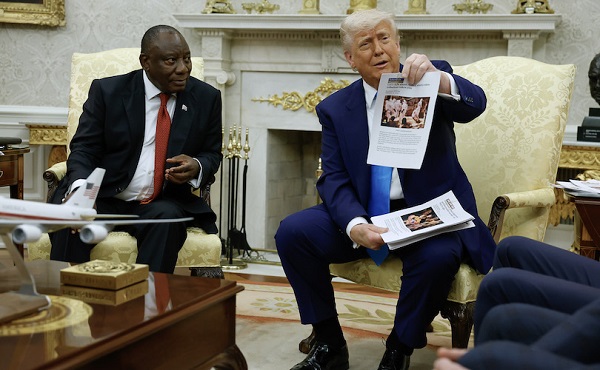
From LifeSiteNews
Trump highlights ‘genocide’ of white farmers to South African president during White House meeting, telling him, ‘White South Africans are fleeing because of the violence and racist laws.’
President Donald Trump confronted the South African president with video evidence of persecution and murder against White farmers during a White House press meeting.
During a televised meeting between South African President Cyril Ramaphosa and Trump on May 21, the U.S. president addressed the persecution of White farmers in South Africa.
“We have many people that feel they are being persecuted, and they are coming to the United States. We take from many locations if we feel there is persecution or genocide going on,” Trump said.
Addressing Ramaphosa directly, he added: “Generally, they are White farmers and they are fleeing South Africa, and it’s very sad to see, but I hope we can have an explanation of that because I know you don’t want that.”
President Trump always brings the receipts. 🧾🧾🧾 pic.twitter.com/lokUUwqglP
— The White House (@WhiteHouse) May 21, 2025
Trump then showed Ramaphosa and all the present members of the press a video compilation that included speeches by Julius Malema, the leader of South Africa’s communist Economic Freedom Fighters party, openly calling for the killing of White people in South Africa.
Malema is seen galvanizing his supporters at a party event, singing a song that calls for the killing of the White farmers. “Kill the Boer, the farmer!” he shouts into the microphone. Boers are the descendants of Dutch-speaking settlers in Southern Africa.
The video also included a roadside memorial with thousands of white crosses, representing the graves of those killed in attacks on farms.
“These are burial sites. Right here. Burial sites, over a thousand of white farmers and those cars are lined up to pay love on a Sunday morning,” Trump said.
The U.S. president continued to shine a light on the violence against White farmers in front of Ramaphosa, holding up a stack of articles that reported on individual attacks on farms.
“White South Africans are fleeing because of the violence and racist laws,” he stated.
“A correct and a fair media exposes things. But we have a very corrupt media,” Trump stressed. “They won’t even report this. If this were the other way around, it would be the biggest story.”
“All we know is we are being inundated with people, White farmers from South Africa. It’s a big problem,” he added.
Ramaphosa responded that the speeches seen in the video “are not government policy.”
“Our government policy is completely against what he was saying,” he stated, adding that “they are a small minority party which is allowed to exist in terms of our constitution.”
He also insisted that criminal activity in the country is not only directed against White people.
Trump criticized the South African government for passing laws that allow it to expropriate land without payment.
“They’re taking people’s land away, and in many cases, those people are being executed, and in many cases, it’s not the government that’s killing them. It’s people that kill them and then take their land, and nothing happens to them.”
Both Ramaphosa and his white agriculture minister insisted that they vehemently oppose the murderous rhetoric in the videos. However, Ramaphosa has been a leader in the cause of expropriating land and “redistributing” it without compensation to its previous owners. In a speech given in December 2017 to the African National Congress, Ramaphosa said: “The land of our forefathers and our foremothers must return to our people without any fail and without any payment of compensation.”
Here is President Ramaphosa saying he wants to seize land from people he doesn’t consider “our people” and give them zero compensation.
If Trump’s claim is so baseless, then why not just ask him what land he’s referring to? pic.twitter.com/KE4HcjUqpx
— Jacktron (@jacktronprime) May 21, 2025
International
Elon Musk forms America Party after split with Trump
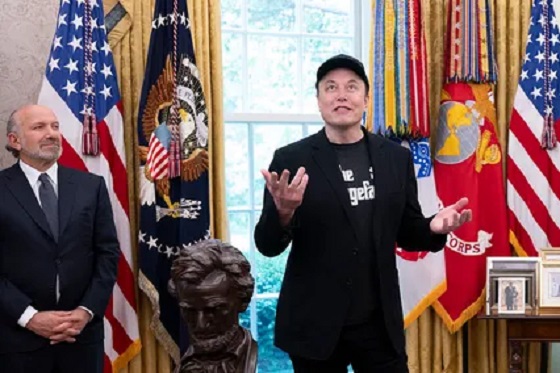
Quick Hit:
Elon Musk announced Saturday he is forming the “America Party,” claiming it will challenge what he calls the “one-party system” in Washington. The move follows his public split with President Trump and appears aimed at targeting Republicans who supported the president’s domestic agenda.
Key Details:
- Musk announced the America Party on X, declaring that Americans are living under a “one-party system” and need a new political alternative.
- The launch followed his criticism of Trump’s One Big Beautiful Bill.
- On Independence Day, Musk posted a poll asking if Americans wanted “independence from the two-party (some would say uniparty) system,” which he cited as support for forming the party.
By a factor of 2 to 1, you want a new political party and you shall have it!
When it comes to bankrupting our country with waste & graft, we live in a one-party system, not a democracy.
Today, the America Party is formed to give you back your freedom. https://t.co/9K8AD04QQN
— Elon Musk (@elonmusk) July 5, 2025
Diving Deeper:
Elon Musk formally announced the launch of his new political outfit — the “America Party” — on Saturday, marking a new chapter in his increasingly public clash with Republican leadership.
“When it comes to bankrupting our country with waste & graft, we live in a one-party system, not a democracy,” Musk wrote on his platform, X. “Today, the America Party is formed to give you back your freedom.”
The announcement comes as tensions between Musk and President Trump have escalated. While Musk previously worked closely with the administration as head of the Department of Government Efficiency, the relationship has deteriorated in the wake of Trump’s push for the One Big Beautiful Bill, a major domestic package that Musk now openly criticizes.
In a series of recent posts, Musk vowed to help primary Republican lawmakers who backed the bill. “They will lose their primary next year if it is the last thing I do on this Earth,” he posted earlier this week.
He’s offered few specifics beyond that, other than suggesting the party will “laser-focus” on a handful of Senate and House races in 2026. So far, there’s been no indication of a formal party structure, candidate recruitment, or funding plan.
Critics were quick to compare Musk’s move to Ross Perot’s 1992 presidential bid, which many credit with splitting the conservative vote and aiding Bill Clinton’s election. “You are pulling a Ross Perot, and I don’t like it,” one user reportedly responded on X.
Meanwhile, Trump has reportedly explored options to retaliate. According to multiple reports, the president has discussed whether to revoke federal contracts connected to Musk’s companies and even floated questions about his citizenship. “We’ll have to take a look,” Trump told reporters when asked directly.
While it’s too early to tell whether the America Party will amount to more than a personal platform, the political message is clear: Musk is now openly working against Republicans he once aligned with, and doing so under his own banner.
Disaster
Texas flood kills 43 including children at Christian camp
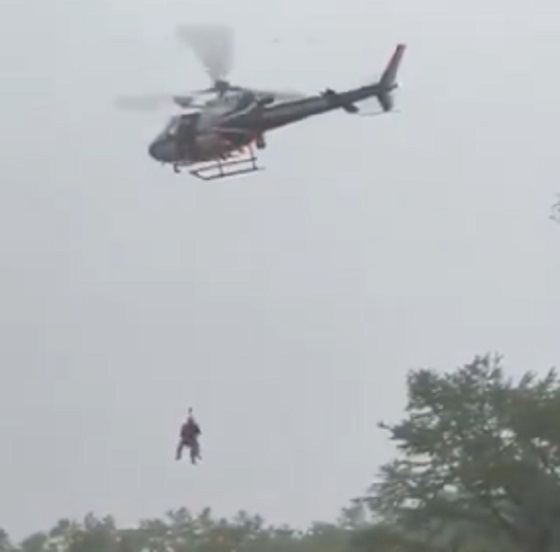
Quick Hit:
Flash flooding in Kerr County, Texas has left at least 43 people dead—including 15 children—after a wall of water tore through camps and neighborhoods along the Guadalupe River. Among the victims were young girls attending a Christian summer camp, as families grieve and recovery efforts intensify.
Key Details:
- Officials confirmed Saturday that 43 people have died—28 adults and 15 children—following early Friday morning floods in Kerr County. Seventeen victims remain unidentified.
- Four young girls who died—ages 8 and 9—were attending Camp Mystic, a nearly 100-year-old Christian summer camp for girls. Dozens of campers were briefly unaccounted for.
- The camp’s director, Dick Eastland, was among the dead after reportedly racing to a cabin in an effort to save girls trapped in rising waters. Another local camp director also died.
Air rescue missions like this are being done around the clock.
We will not stop until everyone is accounted for. pic.twitter.com/tqwTr1RkEi
— Greg Abbott (@GregAbbott_TX) July 4, 2025
Diving Deeper:
Texas is reeling from one of the deadliest flash floods in recent memory, with at least 43 confirmed dead—including 15 children—after floodwaters surged through Kerr County early Friday morning. Officials said 12 adults and five children have yet to be identified.
Much of the devastation centered around the historic Camp Mystic, a Christian summer camp for girls situated along the Guadalupe River, where dozens of campers were swept up in the flood. Family members have since confirmed that four of the victims—8-year-olds Renee Smajstrla and Sarah Marsh, and 9-year-olds Janie Hunt and Lila Bonner—had been attending the camp.
Renee’s uncle reportedly wrote on Facebook that she was “living her best life at Camp Mystic.” Sarah’s family shared that the Alabama girl was “a spunky ray of light,” while Lila’s relatives described their pain as “unimaginable.”
The camp’s longtime director, Dick Eastland, died heroically while trying to rescue girls from a cabin as waters rushed through the grounds. Another director, Jane Ragsdale of the nearby Heart O’ the Hills Camp, was also killed. Though her camp wasn’t in session, she was on the property when the flood struck.
Camp Mystic, which serves hundreds of girls each summer, was left in ruins. “The camp was completely destroyed,” said 13-year-old Elinor Lester, who was among those rescued. Photos show cabins torn open, trees ripped from the ground, and bunk beds submerged nearly to the top by river water.
As many as 27 girls at the camp were swept up by the flooding, but several have since been reunited with their families. Ashley Flack, whose daughter attended Mystic, said Saturday, “There are lots of families missing, children and friends… Our daughter is safe. Our son is safe. The operation to get the girl camp out did a good job.”
Rescue missions pulled at least 858 people to safety, and eight were reported injured. Officials noted that while other nearby camps were also impacted, those campers have been accounted for and are awaiting evacuation as crews work to repair damaged roads.
Texas Governor Greg Abbott expanded a disaster declaration on Saturday to include 21 counties. More than 1,000 state personnel and 800 vehicles are assisting in rescue and recovery, while FEMA, the Texas National Guard, and Coast Guard aircraft have been deployed to aid in the search.
President Trump posted on Truth Social Saturday, saying: “Melania and I are praying for all of the families impacted by this horrible tragedy. Our Brave First Responders are on site doing what they do best. GOD BLESS THE FAMILIES, AND GOD BLESS TEXAS!”
Forecasters say more rain could fall over the next 48 hours, raising the risk of additional flooding across Central Texas. The Guadalupe River last saw similar tragedy in 1987, when 10 teenagers died after a church bus was swept away.
-

 Business2 days ago
Business2 days agoDallas mayor invites NYers to first ‘sanctuary city from socialism’
-

 Agriculture2 days ago
Agriculture2 days agoLacombe meat processor scores $1.2 million dollar provincial tax credit to help expansion
-
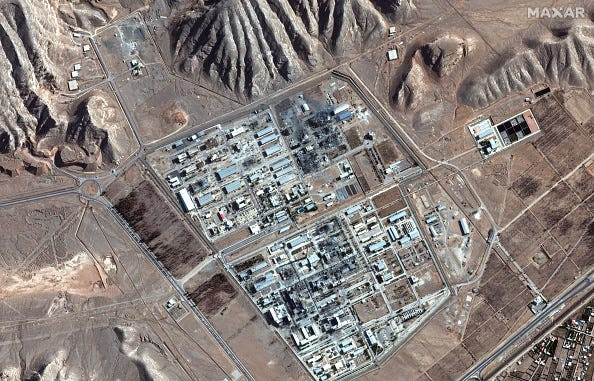
 conflict2 days ago
conflict2 days agoUS airstrike on Iran’s nuclear facilities. Was it obliteration?
-
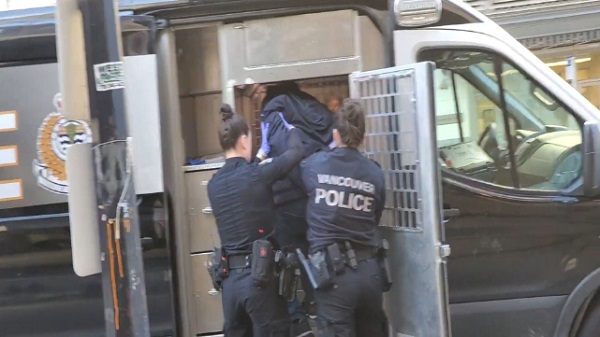
 Crime2 days ago
Crime2 days agoThe Left Thinks Drug Criminalization Is Racist. Minorities Disagree
-

 Disaster1 day ago
Disaster1 day agoTexas flood kills 43 including children at Christian camp
-

 Alberta Sports Hall of Fame and Museum2 days ago
Alberta Sports Hall of Fame and Museum2 days agoAlberta Sports Hall of Fame 2025 Inductee profiles – Alpine Skiing Athlete – Brady Leman
-

 Carbon Tax1 day ago
Carbon Tax1 day agoCanada’s Carbon Tax Is A Disaster For Our Economy And Oil Industry
-

 Business16 hours ago
Business16 hours agoThe Digital Services Tax Q&A: “It was going to be complicated and messy”






